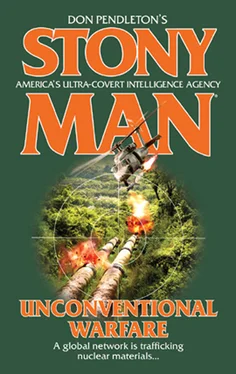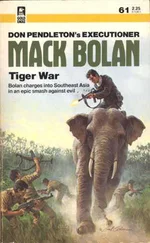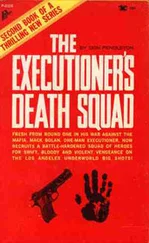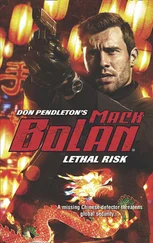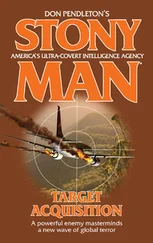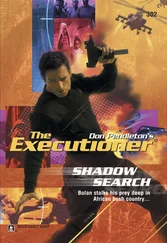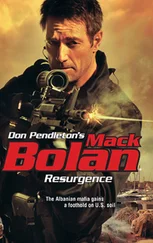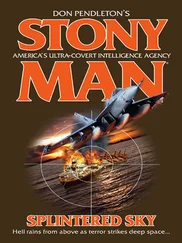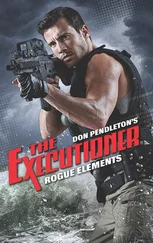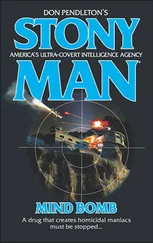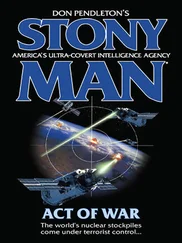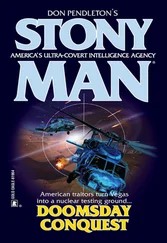“It seems we have a situation,” Bao explained, “in Africa.”
“Yes?”
“I’m going to require the use of your Armenian connection.”
Ciudad Juárez, Mexico
THE JUÁREZ CARTEL had turned the city into a free fire war zone.
In the year leading up to August of 2009 the border city had the highest murder rate in the world. Chaos was rampant in the streets, and the police department was utterly ineffective, or completely corrupted, in the face of drug money and paramilitary criminal violence.
Bodies littered the streets. People were executed, abducted and assaulted on an hourly basis. Sexual predators and serial killers so afflicted the city’s female population that Amnesty International had become involved with international relief efforts to save the women.
Federal police and Mexican army troops deployed in huge numbers to the area in an attempt to restore order. The drug cartels responded by fighting an insurgency campaign with weapons every bit as powerful as those wielded by the military.
The U.S. sent money and resources to help combat the problem, but the warfare spilled across the border, causing a dramatic increase in kidnappings and gang violence in El Paso and as far west as Arizona.
The drugs still flowed north. In return, money flowed south. Many analysts claimed American firearms flowed south, as well. While this might have been true to a degree, the cartels combated each other, as well as the police and Mexican army, with military-grade hardware unobtainable by the citizens of the United States.
The wealth to be accrued was so great that corruption was systemic. It filtered its way up from street cops to judges to army generals and national politicians.
Like a disease passing so quickly it was pandemic, the stain of drug money spread into the heart of the Mexican government’s establishment.
This included the officers and agents of the Centro de Investigación y Seguridad Nacional, or National Security and Investigation Center, CISEN.
Forty-eight hours earlier a high-placed official in CISEN sold out the location of an undercover team of agents from the American Drug Enforcement Administration to members of the hyperviolent and brutally sadistic Juárez Cartel.
The bodies of the American law-enforcement officers turned up in a ditch near the border.
Their heads turned up hanging from light poles throughout the city.
Now the CISEN agent responsible for the betrayal was meeting with his cartel contacts to receive his payment.
Thanks to the digital intercept capabilities of the National Security Agency, Stony Man’s Able Team would also be attending the meet. Except the elite counterterrorist team would be gate-crashing.
THE ABANDONED FACTORY of the now defunct company Servicious Plasticos Ensambles stood alone in a massive dirt lot cluttered with garbage and rubble. Once the factory sweatshop had closed down, the city cut the power to that section of the grid.
Now the structural skeleton of the factory, along with the shantytown neighborhood surrounding it, lay covered in an utter darkness broken only by the occasional lantern in some black eye of a window. The lights of the better sections of Juárez glittered in the background.
Somewhere several blocks over, a woman began screaming in long, looping shrieks. A man’s voice broke in, shouting angrily.
Seconds later a staccato burst of automatic weapons fire broke out.
Then there was an abrupt silence broken a heartbeat later by the screech of tires.
Able Team emerged out of the darkness.
They moved fast, with a purpose and a lethal confidence hard earned. Like one of the U.S. Army’s small kill teams hunting the lonely stretches of highway outside of Baghdad, they emerged from the desert and disappeared again into shadow.
Night-vision goggles, DARPA-supplied next-generation AN/PVS-9 models, turned them into cyclopean silhouettes. Sound-suppressed M-4 carbines hung under jackets, silencer-equipped barrels pointed downward. Muscular torsos were sheathed in Kevlar-weave protective vests boasting ceramic inserts.
They wore backup silenced 9 mm pistols in shoulder rigs, and unmuffled .45-caliber Detonic Combat Master handguns were nestled in holdout holsters at the small of their backs. Fighting knives of surgical-grade steel were clipped to calves or forearms as weapons of last resort.
The stench of industrial pollution was a constant background miasma. Halfway across the dirt lot the smell was cut suddenly by the sharp putridness of rotting meat.
Alarmed, Carl Lyons, ex-LAPD homicide detective and Able Team leader, turned his head in the direction of the stink and saw a dead dog lying in a shallow depression. The NVG’s amplification of ambient light was so good he could see the squirming white mass of maggots covering the corpse.
Hermann Schwarz, former Army reconnaissance specialist and electronics genius, turned his head and spit the taste out of his mouth.
“This place has really gone to the dogs,” he muttered in a low voice.
Rosario Blancanales, former Special Forces soldier, opened his mouth to reply and suddenly froze. The unmistakable sound of a rattlesnake buzzed out of the bushes near his foot.
Lyons spun instantly, cursing softly. His head swiveled as he scanned with the NVGs, looking for the snake. Both he and Schwarz drew their Beretta 92-F pistols with 4-inch silencers screwed into the specially threaded barrels.
“Where is it?” Schwarz snapped.
“There.” Blancanales pointed to the ground at his feet.
Both of his teammates lifted their pistols but were too slow.
The Western Diamondback rattlesnake uncoiled like a trap going off, striking even as Blancanales tried dancing backward. It stretched out four feet and its blunt head rammed into the Puerto Rican’s leg with the force of a baseball bat.
“Jesus!” Blancanales grunted and staggered.
He felt the hot needle of a fang slide into his calf, and instantly agonized jolts of pain raced up and cut his breath off.
Schwarz and Lyons, using their NVGs, fired.
The snake blew into three separate chunks like a severed noodle. The squat, ugly head of the Diamondback hung for a moment from the top of Blancanales’s boot, then dropped off.
“Christing hell!” Blancanales swore.
“Sit down,” Schwarz said, moving to help his old friend.
“You have anything in the med kit to help?” Lyons demanded.
The ex-cop took a knee as he holstered his pistol. He swung his M-4 up and provided security. Blancanales sat heavily on the rubble-strewed ground and yanked his pant leg up out from where it was tucked into his boot.
“Like a snakebite kit? Antivenom?” Blancanales laughed. “Nope. Just the standard trauma stuff.” Ironically, the ex-Green Beret was the one most often charged with medical responsibilities on Able Team. “This is supposed to be an urban area, goddammit.”
Schwarz leaned over, turned on the IR penlight set on his night-vision goggles and illuminated the wound. Even in that uncertain light the leg was already obviously swollen. The puncture mark was a neat, red, raised hole leaking thinned-out blood.
“Looks like it only got you with one fang,” Schwarz observed. “The other one got caught on the leather of your boot top.”
“Let’s get him up and back to the vehicle,” Lyons said. “We’ll scrub the op.”
“Screw that, Ironman,” Blancanales said in a raspy voice. “Only one dose? It’s not that bad—I’ve got time. The poison isn’t that fast acting. I’ll be sick, sure. I’ll wish I could cut off my leg, but I’ve got hours before it’s really life-threatening. We are going to continue the mission.”
Lyons frowned, silently debating his responsibilities.
“You don’t have any antivenom,” he pointed out. “It’ll kill flesh.”
Читать дальше
